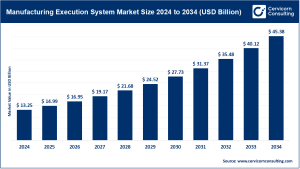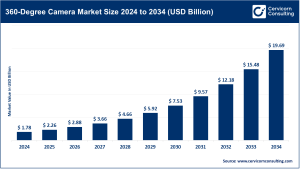India Consumer Electronics Market Overview
The India consumer electronics market stands out as one of the fastest-expanding industries in the country, fueled by higher disposable incomes, rapid digital adoption, and evolving consumer behavior. In 2024, the market size was estimated at USD 83.90 billion, and it is forecasted to grow to nearly USD 162.74 billion by 2034, advancing at a CAGR of 6.85% between 2025 and 2034. The sector covers a wide variety of products, ranging from televisions and smartphones to refrigerators, washing machines, and other household appliances, underscoring India’s shift toward modern, technology-driven lifestyles.
Key Market Trends
The market’s development is being shaped by a combination of technological advancements, regulatory actions, and shifting consumer expectations. Key trends include:
1. Smart and Connected Devices
The adoption of IoT-enabled appliances is growing rapidly, with consumers showing a preference for smart TVs, connected refrigerators, and AI-powered air conditioners that allow remote control and automation.
-
Example: Smart TVs integrated with virtual assistants are becoming increasingly popular in metro households.
2. Energy-Efficient and Sustainable Products
Government efforts such as the Bureau of Energy Efficiency (BEE) certification program are pushing manufacturers to deliver appliances that are more energy-efficient. At the same time, consumers are gravitating toward eco-friendly electronics to minimize their environmental footprint.
3. Digitalization and Growth of E-Commerce
Online platforms have become a critical sales channel for electronics, especially in metro and semi-urban regions.
-
Example: Platforms like Amazon India and Flipkart reported record-breaking sales during festival seasons, particularly for smartphones and large appliances.
4. Integration of AI and Emerging Technologies
Appliances and gadgets are increasingly embedding AI, machine learning, and automation, enabling predictive performance, enhanced personalization, and improved reliability.
5. Rising Popularity of Portable and Wearable Devices
With a stronger focus on fitness and health, devices like smartwatches, wireless earbuds, and fitness trackers are experiencing robust demand, particularly among young, tech-savvy consumers.
Market Drivers
The growth of India’s consumer electronics industry is being propelled by several strong drivers:
Rising Disposable Income and Urbanization
The expanding middle class and increasing per capita income levels are boosting demand for premium and mid-segment products, while urbanization accelerates the adoption of modern appliances.
Supportive Government Policies
Initiatives like “Make in India” and production-linked incentives are strengthening local manufacturing capabilities, reducing import reliance, and fostering cost competitiveness.
Continuous Technological Innovation
Breakthroughs in connectivity, AI integration, and energy efficiency are making electronics more attractive and driving shorter product replacement cycles.
Evolving Consumer Preferences
The younger demographic, especially millennials and Gen Z, favors connected, smart, and eco-conscious devices, boosting demand in IoT-enabled and sustainable categories.
Expansion of Retail and E-commerce Channels
The widespread reach of e-commerce combined with organized offline retail networks ensures product availability across both urban and semi-urban markets.
Impact of Trends and Drivers
-
Segmental Influence: Smart appliances and wearables are expanding at a faster rate compared to conventional electronics like traditional TVs and refrigerators.
-
Regional Impact: High-end product adoption is concentrated in Tier-1 cities, while Tier-2 and Tier-3 regions are fueling demand for cost-effective and energy-efficient appliances.
-
Application Influence: Home automation, health & fitness, and entertainment are the segments most directly benefiting from these trends.
Challenges & Opportunities
-
Challenges: Heavy dependence on imports for key components, competitive pricing pressures in rural markets, and high brand competition pose challenges.
-
Opportunities: Expanding income levels, government-led domestic manufacturing initiatives, and rising awareness of energy-efficient and smart technologies open up substantial growth potential for market players.
Future Outlook
The India consumer electronics industry is set to nearly double in size by 2034, with sustained demand for AI-powered devices, IoT-based products, and eco-friendly solutions. Both domestic and global manufacturers will find opportunities to expand and innovate as the market continues its transformation.


